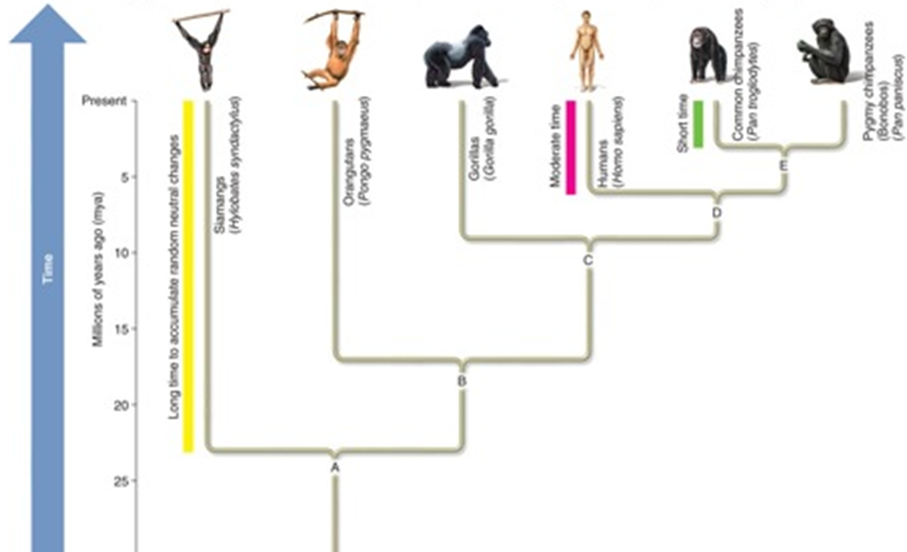Which pair of species would be expected to have fewer genetic differences: orangutans and gorillas or gorillas and humans? Why?

A. Gorillas and humans because their common ancestor (C) is more recent than that of orangutans and gorillas (B).
B. Gorillas and humans because their common ancestor (B) is more recent than that of orangutans and gorillas (D).
C. Gorillas and orangutans because their common ancestor (C) is more recent than that of humans and gorillas (B).
D. Humans and orangutans because their common ancestor (C) is more recent than that of orangutans and gorillas (D).
A. Gorillas and humans because their common ancestor (C) is more recent than that of orangutans and gorillas (B).
You might also like to view...
Which is the correct order of protein mediators that are produced during an acute inflammatory response?
A. Chemotaxins, selectins, kallikreins, integrins B. Integrins, kallikreins, selectins, chemotaxins C. Kallikreins, chemotaxins, integrins, selectins D. Selectins, integrins, chemotaxins, kallikreins
What is it called when the gene pool is fluxing because of the migration of individuals?
a. natural selection b. mutation c. gene flow d. genetic drift
If you transfuse type AB blood into a patient with type A blood, the patient will raise antibodies against the B antigen on the donor's blood, but will not raise antibodies against the A antigen. Why not?
A. B and T cells that recognize the A antigen will have been removed by clonal deletion. B. Antibodies that recognize the A antigen will have been removed by the spleen. C. Antibodies that recognize the A antigen will have been removed by the bone marrow. D. Macrophages will not present the A antigen to T cells. E. Recombination of the gene for antibodies cannot produce self-reactive clones.
Which of the following are examples of innate immunity? 1. stomach pH 2. natural killer cells 3. B lymphocytes 4. fever
A) 1 and 2 only B) 2, 3, and 4 only C) 1, 3, and 4 only D) 1, 2, and 4 only